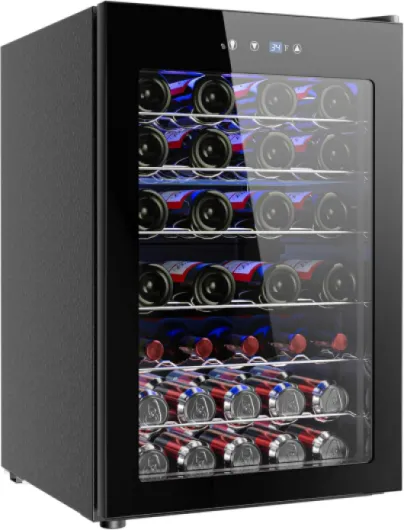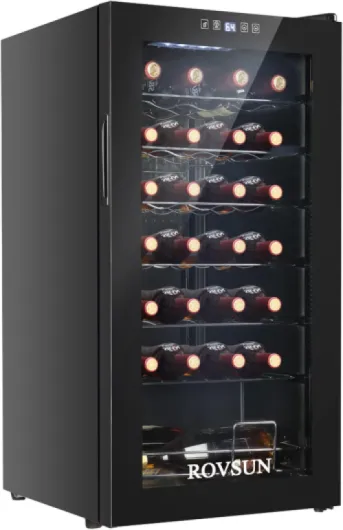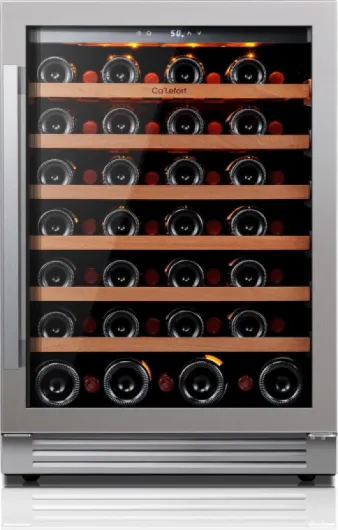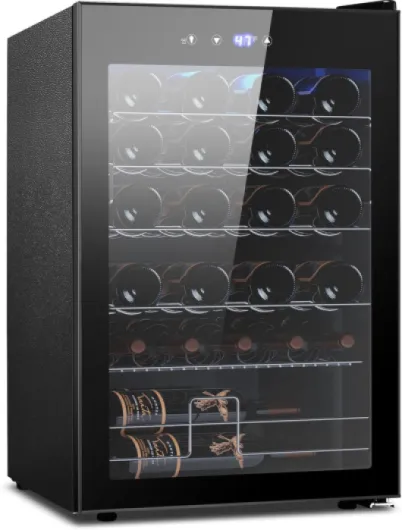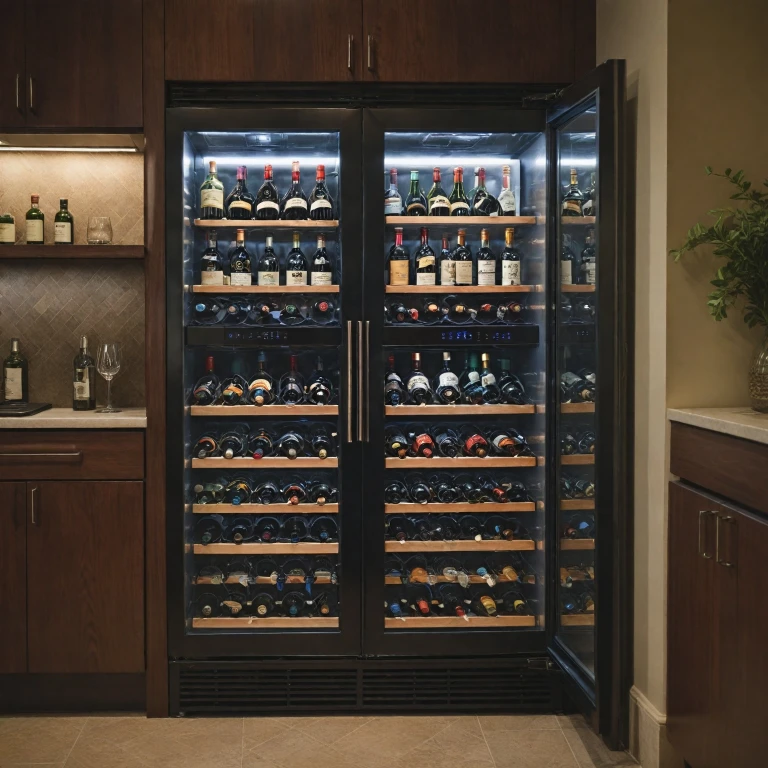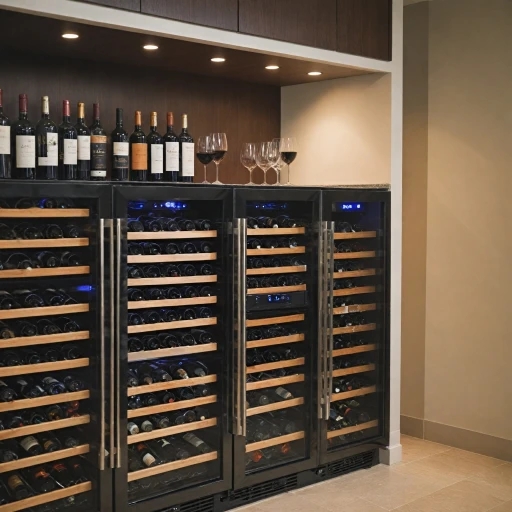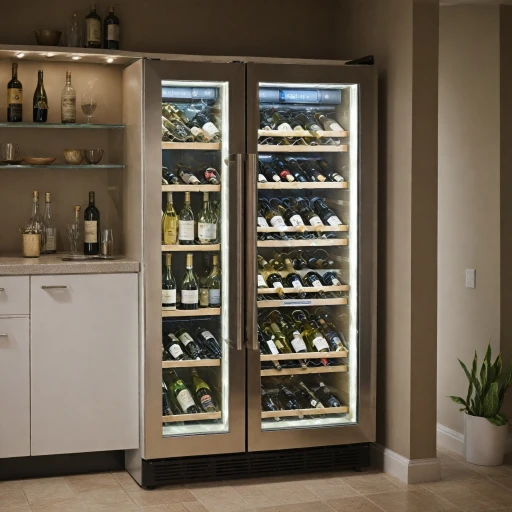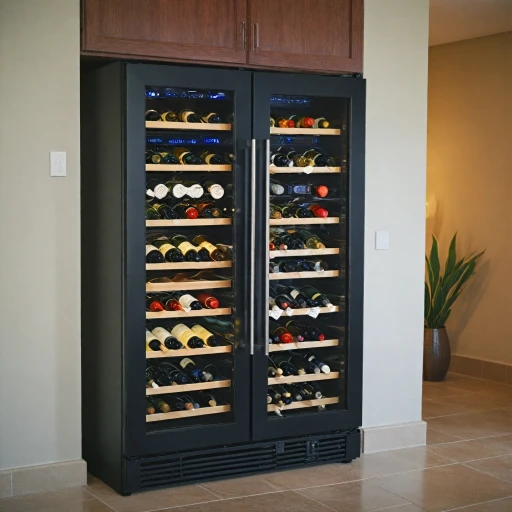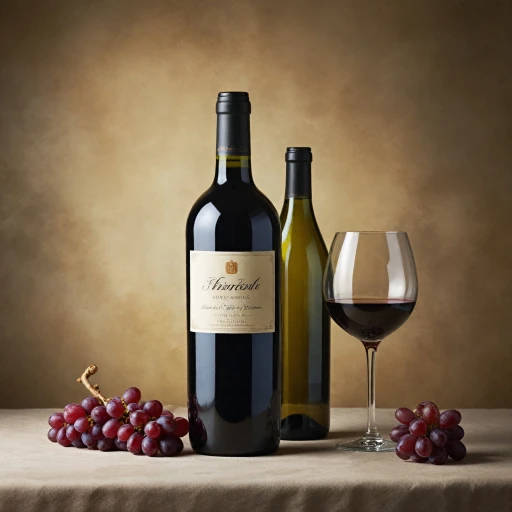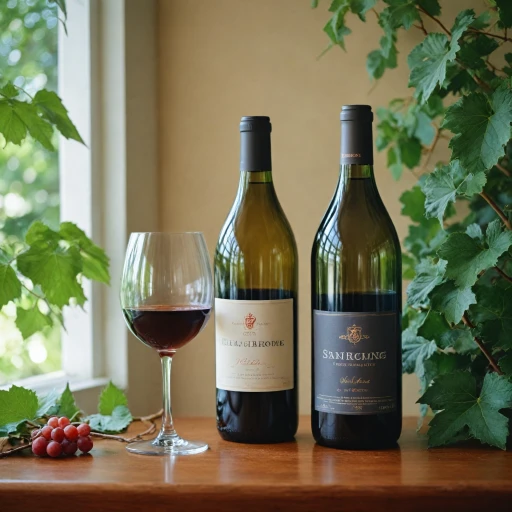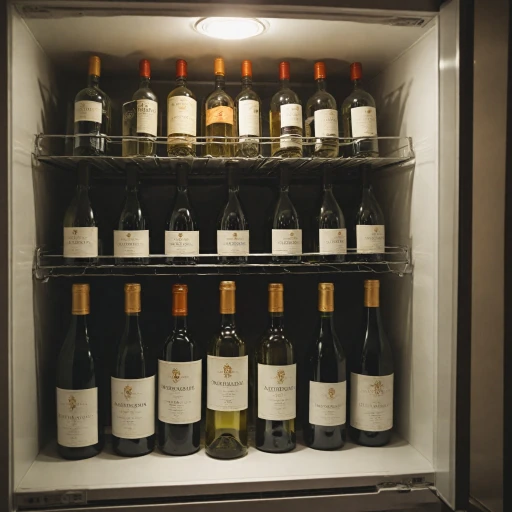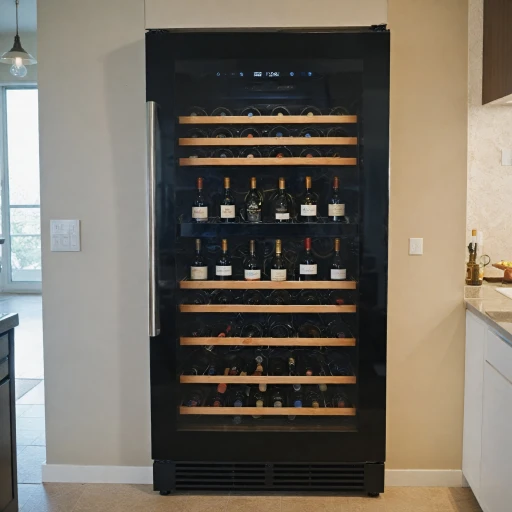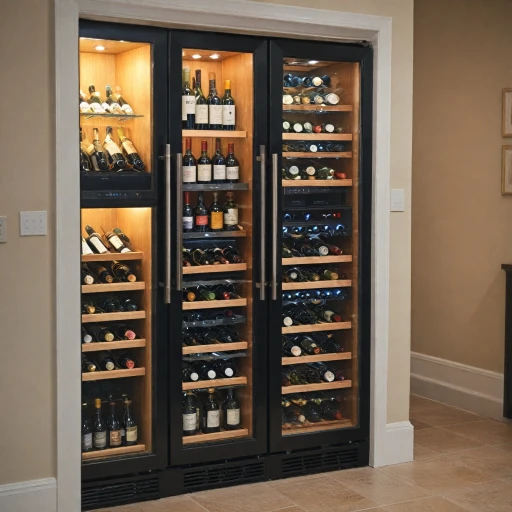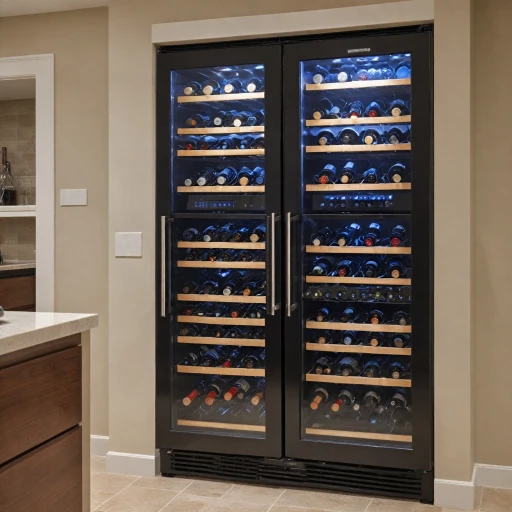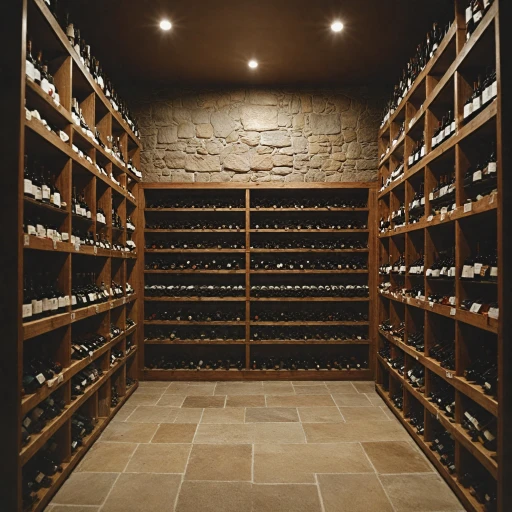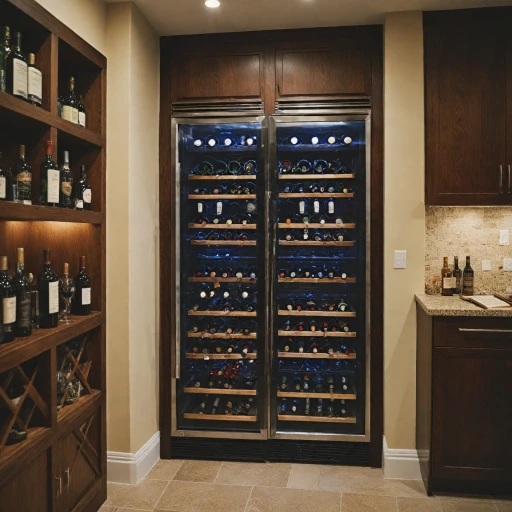
Understanding Red Wine Storage Needs
Getting Acquainted with Wine Storage Essentials
When it comes to preserving the quality of your red wines, understanding their storage needs is paramount. Proper wine storage isn't just about maintaining a safe place for your bottles; it's about ensuring that every sip of your favorite red wine is as delightful as intended by the winemaker. Storing your wine at optimal temperature can significantly influence the flavor profile and bouquet that emerges each time a bottle is uncorked.
Most red wines thrive at specific temperatures, and storing them too warm or too cold can lead to unwanted flavors and shortened aging potential. While wine serving temperature is crucial, storage temperature plays an equally vital role in retaining a wine's integrity over time. A dedicated wine fridge or cooler becomes indispensable here, as it allows you to maintain precise conditions for ideal wine storage.
Red wines benefit from being stored at cool, consistent temperatures, which makes a wine fridge a more suitable choice over standard fridges or room temperature storage. Red varieties, such as Cabernet Sauvignon and Merlot, have distinct storage preferences that make understanding these principles necessary for any wine enthusiast.
Moreover, selecting a dual zone wine cooler can offer flexibility, enabling you to cater to both red and white wines with different temperature needs. By making informed decisions on storage environments, you can ensure your wine served from the wine fridge tastes just as refined as intended.
To delve deeper into optimal storage temperature settings and find the perfect balance for preserving your red wines, visit this comprehensive guide for more insights.
The Science Behind Wine Temperature
Exploring the Science of Temperature Control
Understanding the science of temperature control is essential for achieving optimal wine storage. When wine is stored at the right temperature, it can develop its full potential, offering a richer tasting experience. Red wine, in particular, requires specific temperature settings that align with its unique chemical and structural properties.
The reality is that both ends of the temperature spectrum can negatively impact wine. When exposed to excessively warm conditions, wines risk accelerating their aging process, leading to unpleasant flavors and aromas. Conversely, if the temperature is too cool, the wine can enter a state of "dormancy," slowing maturation and potentially causing cork shrinkage, which risks oxidation.
Moreover, each wine type has a distinct optimal storage temperature. While red wines generally flourish between 55-65°F (12-18°C), other types such as white wines and sparkling varieties have their own ideal ranges. Observing these differences is crucial for a red wine enthusiast who might have a dual zone wine fridge to accommodate diverse collections.
For those seeking a more comprehensive understanding of these principles, here is an informative resource on optimal temperature for storing wine that covers numerous factors influencing wine storage success.
Ideal Temperature Range for Red Wine
Finding the Perfect Temperature for Red Wines
Understanding the role that temperature plays in wine storage is essential for any wine aficionado. Red wines, in particular, require a specific temperature range to ensure they maintain their nuanced flavors and aromatic complexity. Generally, the ideal temperature for storing red wines in a wine fridge, also known as a wine cooler, is between 55°F and 65°F (13°C - 18°C). This range helps in preserving the wine's integrity and prevents it from aging prematurely or losing its taste profile. When wines are stored at higher temperatures, they tend to develop cooked flavors, diminishing the enjoyment of the wine once served. Conversely, if wines are stored too cold, subtle aromas and flavors may become muted. Some red wines, such as Pinot Noir, are more sensitive and can benefit from being stored at slightly lower temperatures within this range. For wine enthusiasts who also enjoy white wines, investing in a dual zone fridge can provide flexibility. These fridges allow for separate temperature zones, ensuring that both red and white wines can be stored at their optimal conditions. In addition to the storage factor, the serving temperature also plays a crucial role in wine enjoyment. While red wines are often served slightly below room temperature, they should not be overly chilled. Striking the right balance when you store wine is key to enhancing the wine's sensory experience. Utilizing a wine fridge or dedicated storage area where bottles can be consistently maintained within the ideal temperature range will ensure that your wine is ready to impress, whether it's a red from Bordeaux or perhaps a robust Cabernet Sauvignon. To fully grasp how crucial temperature management is in maintaining wine quality, you might find this exploration into the science behind wine temperature useful. There’s also a fascinating discussion on the role of wine preserver gas in maintaining wine quality that could broaden your understanding of wine storage nuances. By equipping yourself with this knowledge, you can significantly enhance your wine storage practices and, consequently, your wine-drinking experience.Common Mistakes in Wine Fridge Settings
Common Pitfalls in Setting Your Wine Fridge
When it comes to storing red wines, many enthusiasts make avoidable mistakes with their wine fridges. Understanding the optimal storage temperature is crucial, but even with this knowledge, errors can occur. Here are some common pitfalls to watch out for:
- Incorrect Temperature Settings: One of the most frequent mistakes is setting the wine fridge to the wrong temperature. Red wines are often stored at room temperature, which can be too warm. Ensure your wine cooler is set between 55°F and 65°F for optimal storage.
- Ignoring Dual Zone Features: If you own a dual zone wine fridge, take advantage of it. These fridges allow you to store red and white wines at their respective ideal temperatures. Neglecting this feature can lead to improper storage conditions.
- Overloading the Fridge: Filling your wine fridge to capacity might seem efficient, but it can hinder air circulation. This can lead to uneven temperatures and affect the quality of your wines.
- Frequent Door Opening: Constantly opening the fridge door can cause temperature fluctuations. Try to minimize how often you access your wine cooler to maintain a stable environment for your bottles.
- Ignoring Seasonal Adjustments: As seasons change, so can the ambient temperature in your home. Adjust your wine fridge settings accordingly to ensure your wines are stored at the right temperature year-round.
By avoiding these common mistakes, you can ensure that your red wines are stored in optimal conditions, preserving their flavor and quality for when they are served.
Adjusting Your Wine Fridge for Seasonal Changes
Preparing Your Wine Fridge for Changing Seasons
Maintaining the optimal storage temperature for your red wines requires a thoughtful approach as seasons change. Wine fridges, especially those with dual zone features, can be sensitive to external temperature fluctuations. This makes it crucial to adjust settings accordingly to preserve the delicate balance required for optimal wine storage.
When temperatures outside shift, the internal temperature of your wine fridge may also be affected, which can impact how your wines are stored and served. In the winter, for instance, ambient room temperature around a wine fridge decreases, potentially causing red wines to be stored at lower than desired levels. Conversely, summer heat might push temperatures above the ideal range needed for storage.
To tackle these seasonal challenges, consider the following tips for your wine fridges:
- Regularly monitor temperature settings to ensure they remain within the recommended range for red wines.
- Invest in a thermometer to accurately check the temperature within your cooler.
- In single-zone wine coolers, adjust the setting to an average temperature that suits your collection throughout the year.
- For dual zone fridges, use one zone for long term storage and the other for wines that are about to be served.
- Ensure that the fridge's location in your home does not expose it to direct sunlight, which can alter internal temperatures regardless of the season.
This proactive approach will not only help maintain the ideal temperature red wines require but also preserve their quality and flavor when they are served. By understanding the interplay between room temperature and storage temperature, you can better manage your wine fridge settings year-round.
Choosing the Right Wine Fridge for Your Needs
Factors to Consider When Choosing the Best Wine Fridge
When selecting the perfect wine fridge, it's crucial to understand your specific wine storage needs. Different types of wines require distinct storage conditions, and this differentiation is vital for maintaining their quality and taste.
- Capacity: Consider how many bottles you typically store. If you're a serious collector, you might want a larger capacity unit to accommodate your growing collection. Generally, wine fridges range from compact models holding a few bottles to substantial units that can store dozens.
- Temperature Zones: Determine whether a single-zone or dual-zone wine fridge fits your needs. A single-zone fridge is suitable if you primarily store one type of wine, either red wines or white wines. On the other hand, a dual-zone wine cooler allows for simultaneous storage of red and white wines at their respective optimal temperatures.
- Temperature Control: Look for a wine fridge with precise temperature controls. The ability to set specific temperatures will ensure that your wines are stored at their ideal serving temperature, preserving both the aroma and flavor.
- Energy Efficiency: Consider the energy consumption of the wine fridge, especially if you plan to store wine long term. Energy-efficient models not only save on utility bills but also contribute to environmental conservation.
- Size and Placement: Measure the intended location for your wine fridge. Ensure it fits well within your space constraints and allows for adequate ventilation, which is essential for optimal performance.
- Design: Wine fridges come in various styles and designs. From sleek modern models to ones with a classic finish, choose a design that complements your home decor.
Carefully considering these factors will ensure that you choose a wine fridge that not only meets your current needs but also adapts to future wine storage requirements. This thoughtful selection helps maintain the quality of your collection, allowing you to enjoy your wines just as they're meant to be served.
